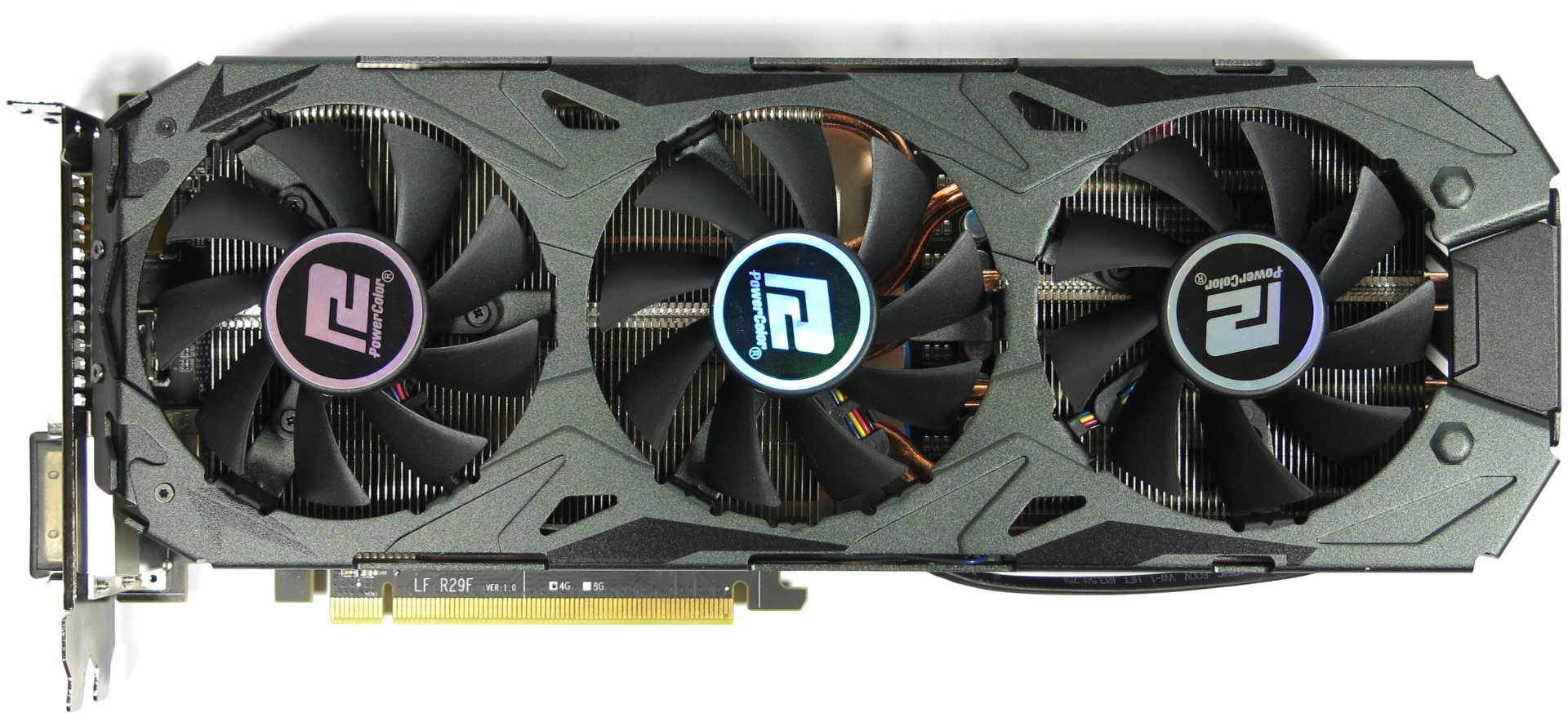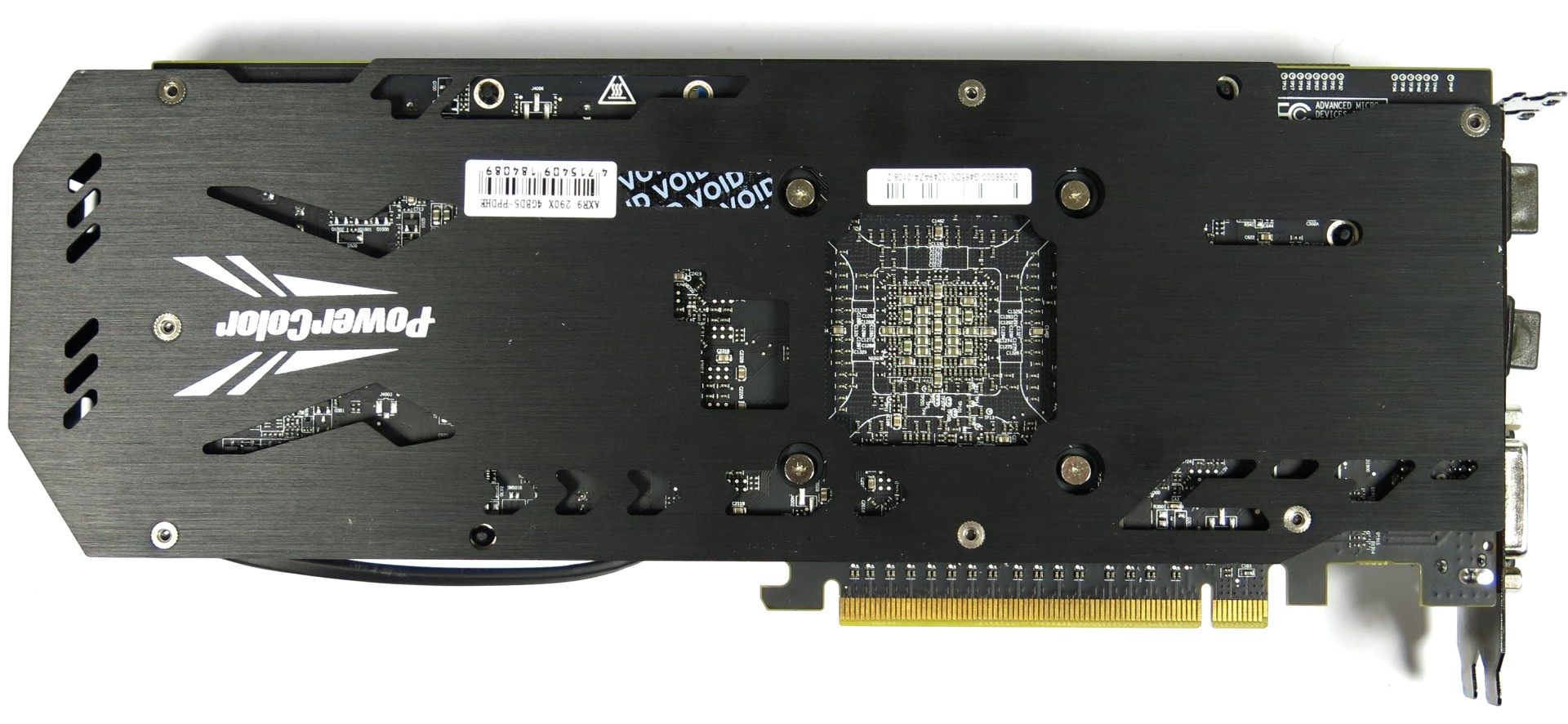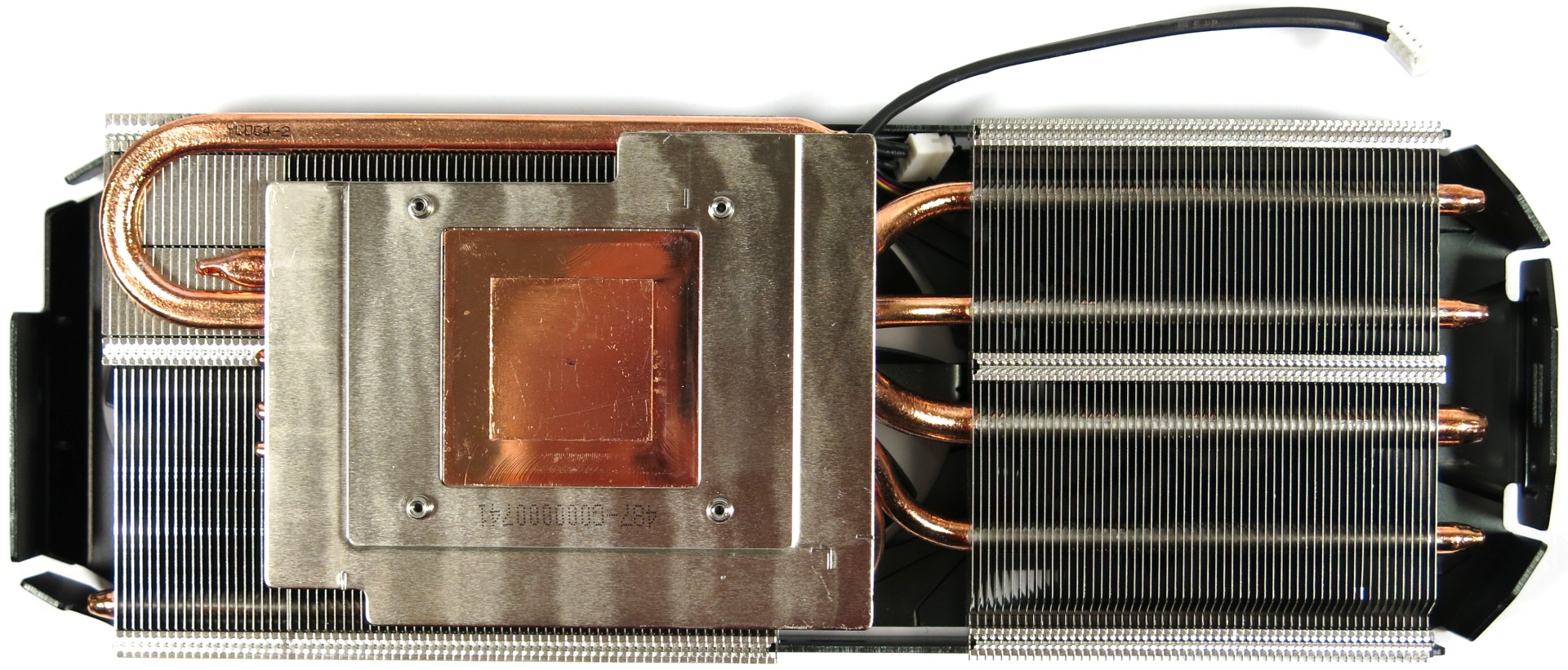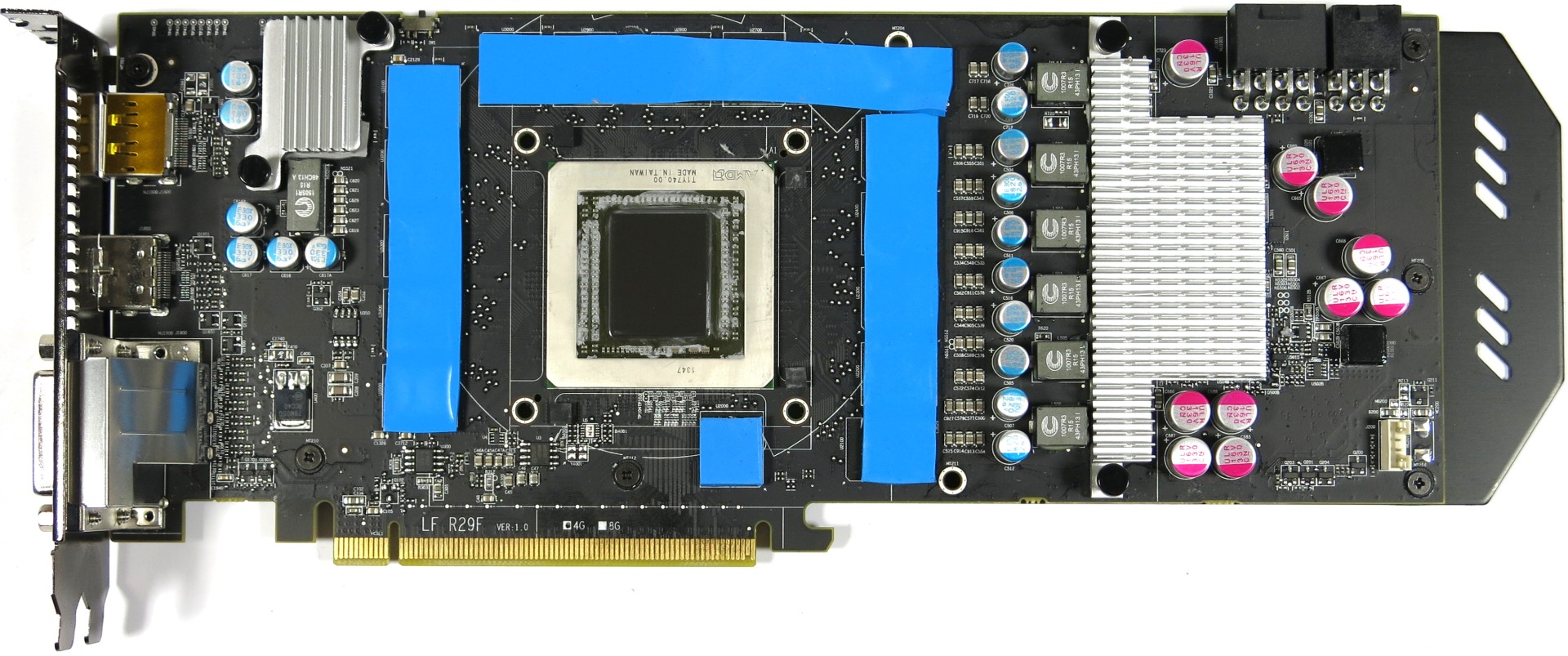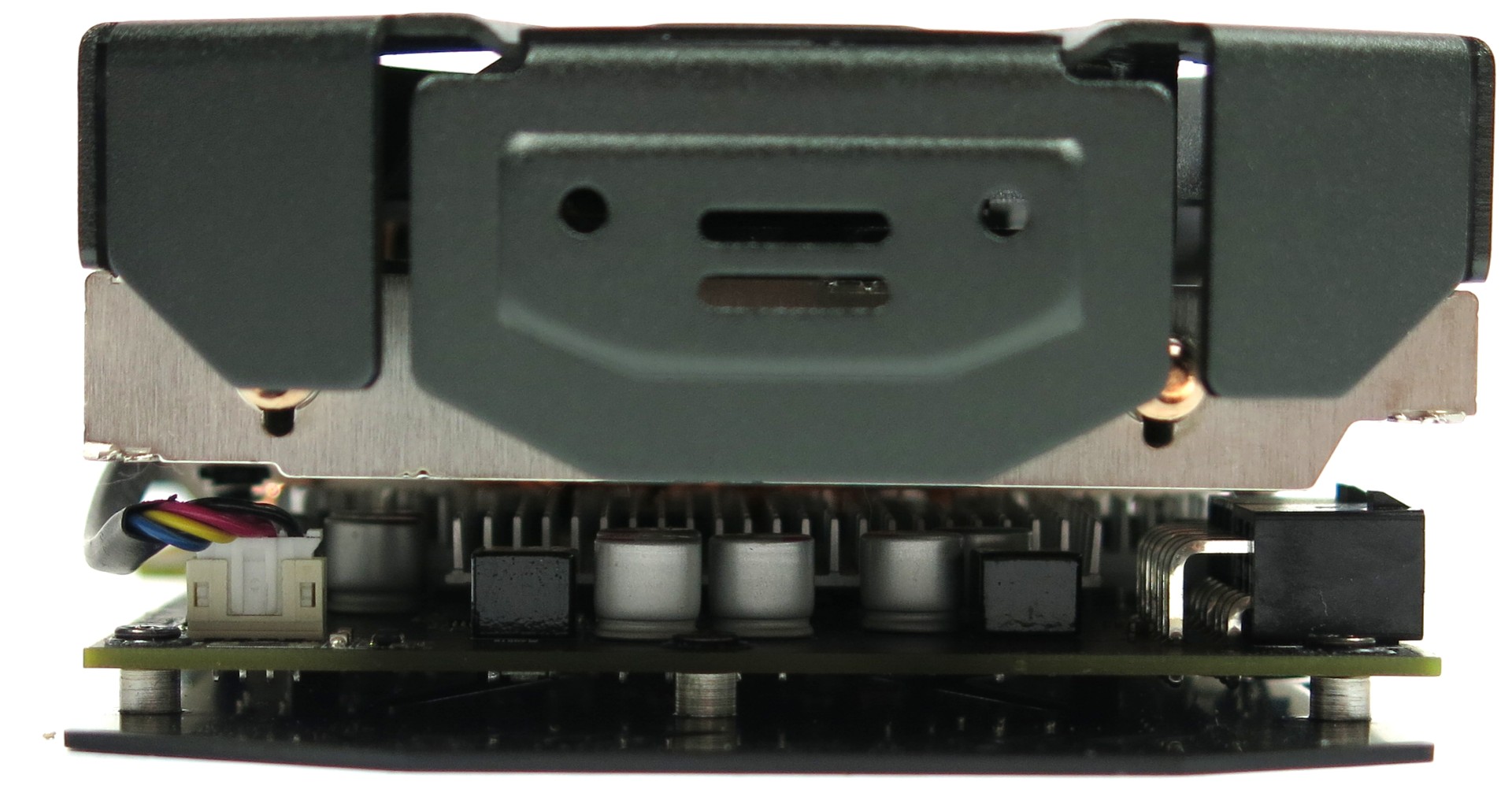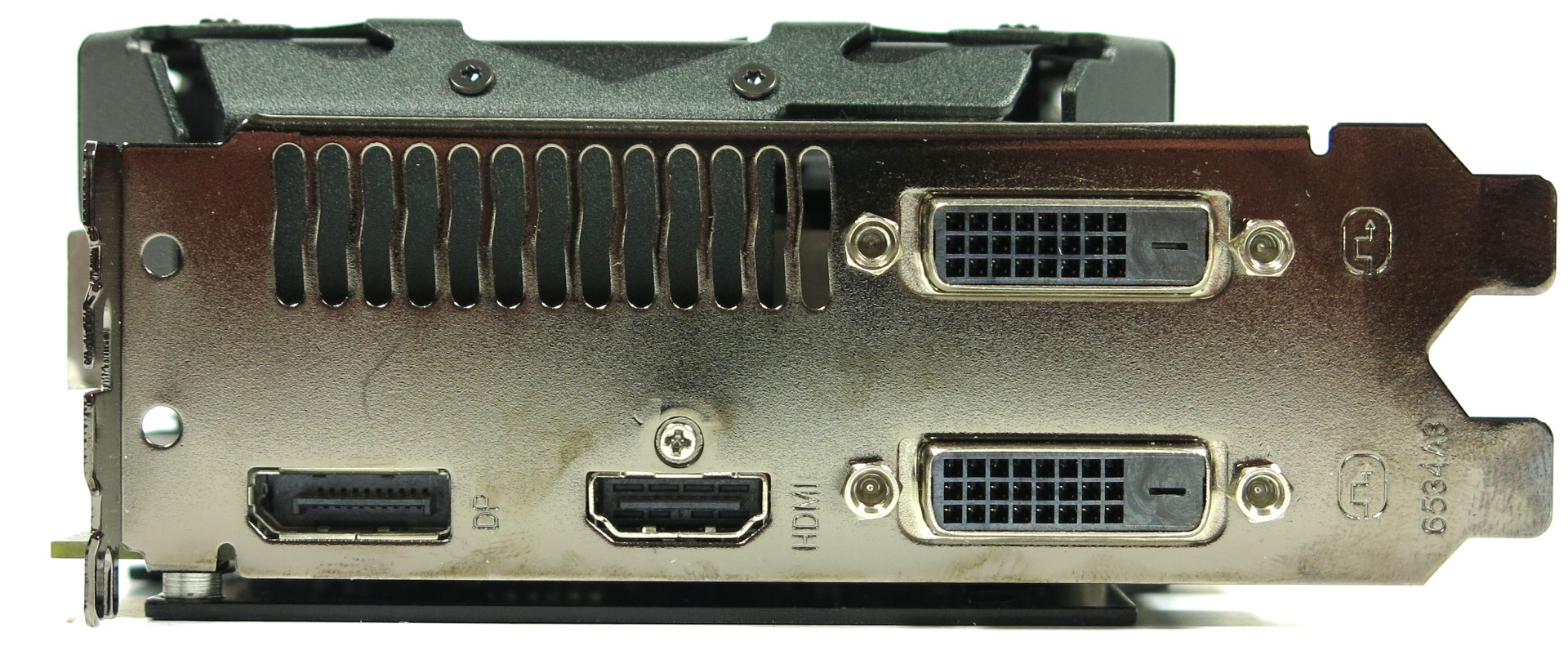PowerColor PCS+ R9 290X Review: Cool, Quiet, And Priced Right
PowerColor sent over a second 2.5-slot Hawaii-based card. The first was MSI's R9 290X Lightning. This one, the PCS+ R9 290X is both lighter and less expensive. Does PowerColor out-engineer MSI and score an upset, or is the PCS+ simply less capable?
Take A Tour Of The PCS+ R9 290X
Front and Rear Views
The front of PowerColor's card is dominated by three commonly-controlled 76 mm fans.
The back plate braces the PCB and ensures it doesn’t flex. However, there is no mounting frame on top of the board, probably to save weight and cut cost.
Heat Sink and PCB
The visually impressive cooler sports a massive copper heat sink, from which four 8 mm heat pipes lead to the cooling fins at the right side of the card. There's a second block of cooling fins on top of the heat sink, and this radiator is attached by a single semi-circular heat pipe.
The DC-DC converters have aluminum heat sinks of their own, while the memory packages make contact with the main heat sink through thermal adhesive.
Side Views
Looking down from the top of the PowerColor PCS+ R9 290X, you mostly see the heat sink's cooling fins, heat pipes, and the 6- and 8-pin power connectors.
The bottom yields a better view of how the heat pipes connect to PowerColor's sink.
Due to the vertical arrangement of the cooling fins, peeking in from the side of the card doesn't reveal much aside from a fan connector and a few board components.
Get Tom's Hardware's best news and in-depth reviews, straight to your inbox.
Slot Panel
The card sports a two-slot rear panel, even though the PCS+ R9 290X is thicker than two expansion slots. A three-slot I/O bracket might have been better for the sake of stability.
Display outputs match what you get from pretty much every Hawaii-based board. There are two dual-link DVI-D connectors, one HDMI port, and a full-sized DisplayPort interface. That combination is more than sufficient for any number of multi-screen arrays. Just be aware that the use of DVI-D means analog output is no longer supported.
Current page: Take A Tour Of The PCS+ R9 290X
Prev Page Third-Party Cooling And An Attractive Price? Next Page Box Contents, Dimensions, And Weight
Igor Wallossek wrote a wide variety of hardware articles for Tom's Hardware, with a strong focus on technical analysis and in-depth reviews. His contributions have spanned a broad spectrum of PC components, including GPUs, CPUs, workstations, and PC builds. His insightful articles provide readers with detailed knowledge to make informed decisions in the ever-evolving tech landscape
-
CaptainTom I just want to point out that this and most 290X's beat a stock 780 Ti. The fact is both 780 Ti and the 290X are trade blows and belong on the same GPU tier. However only one does cost $150 less and come with 4GB VRAM...Reply -
Memnarchon Reply13232466 said:I just want to point out that this and most 290X's beat a stock 780 Ti. The fact is both 780 Ti and the 290X are trade blows and belong on the same GPU tier. However only one does cost $150 less and come with 4GB VRAM...
Well, since you are comparing a non reference GPU, you should take also a non-reference GPU to compare.
Tom's using Gigabyte's 780ti OC which costs the same as the reference card...
So even the non-reference models are on a different tier as well as their reference... -
FormatC Reply13232896 said:Any chance of measurements in metric as well as imperial?
Typical translation errors, the original is in metric ;)
http://www.tomshardware.de/powercolor-r9-290x-pcs-review,testberichte-241519-3.html4
I will clearify with Chris, that we use both in the future. Metric is worldwide more common :D -
dave_trimble Surprised the benchmark graph show performance at 1080p. Aren't the 290 series kind of wasted at that resolution? I would love to see the results at 1440p or even 4k. I have a feeling the 780ti might not look quite as good in comparison at higher resolution.Reply -
photonboy A stock GTX780Ti is 7% faster at 2560x1440, and 8% faster at 1920x1080 (18 games averaged):Reply
http://www.techpowerup.com/reviews/EVGA/GTX_780_Ti_SC_ACX_Cooler/26.html
With such a HUGE difference in prices, quality, and performance on all top-end cards you really have to do your research.
The R9-290X prices vary from $550 to $780 USD! -
dave_trimble Reply13233877 said:A stock GTX780Ti is 7% faster at 2560x1440, and 8% faster at 1920x1080 (18 games averaged):
http://www.techpowerup.com/reviews/EVGA/GTX_780_Ti_SC_ACX_Cooler/26.html
With such a HUGE difference in prices, quality, and performance on all top-end cards you really have to do your research.
The R9-290X prices vary from $550 to $780 USD!
Thanks for the response! I thought I had seen reviews elsewhere that showed the 290 series really closing the gap, or even surpassing the 780ti at higher resolutions, but perhaps I was remembering wrong. I recently decided to upgrade to a dual-290 setup, but if I had gone with a single card, the 780ti was at or near the top of my list (until the 290x prices came crashing down, that is).
-
That_Guy88 So is the difference between 290x's almost entirely due to cooling (and some OC)? I have someone who wants to sell me a reference 290x for $350, but I have a gtx 770, so it would seem that I would need to buy an after market cooler as well to make it worth my while. Thoughts?Reply -
vertexx Reply
See these articles for after-market cooling options:13234604 said:So is the difference between 290x's almost entirely due to cooling (and some OC)? I have someone who wants to sell me a reference 290x for $350, but I have a gtx 770, so it would seem that I would need to buy an after market cooler as well to make it worth my while. Thoughts?
Air cooling:
http://www.tomshardware.com/reviews/r9-290-accelero-xtreme-290,3671.html
Liquid Cooling:
How to:
http://www.pcper.com/reviews/Graphics-Cards/Using-NZXT-Kraken-G10-Watercool-Radeon-R9-290
And results:
http://www.tomshardware.co.uk/radeon-r9-290-and-290x,review-32872.html
